Welcome to Ceramic Review
Ceramic Review is the magazine for contemporary and historical ceramics, ceramic art and pottery.
Ceramic Review Issue 327
May/June 2024
Ceramic Review is the magazine for contemporary and historical ceramics, ceramic art and pottery.
May/June 2024
Colin Martin reviews The Hepworth Wakefield’s new show, which surveys the British studio pottery movement and highlights links with sculptural practice
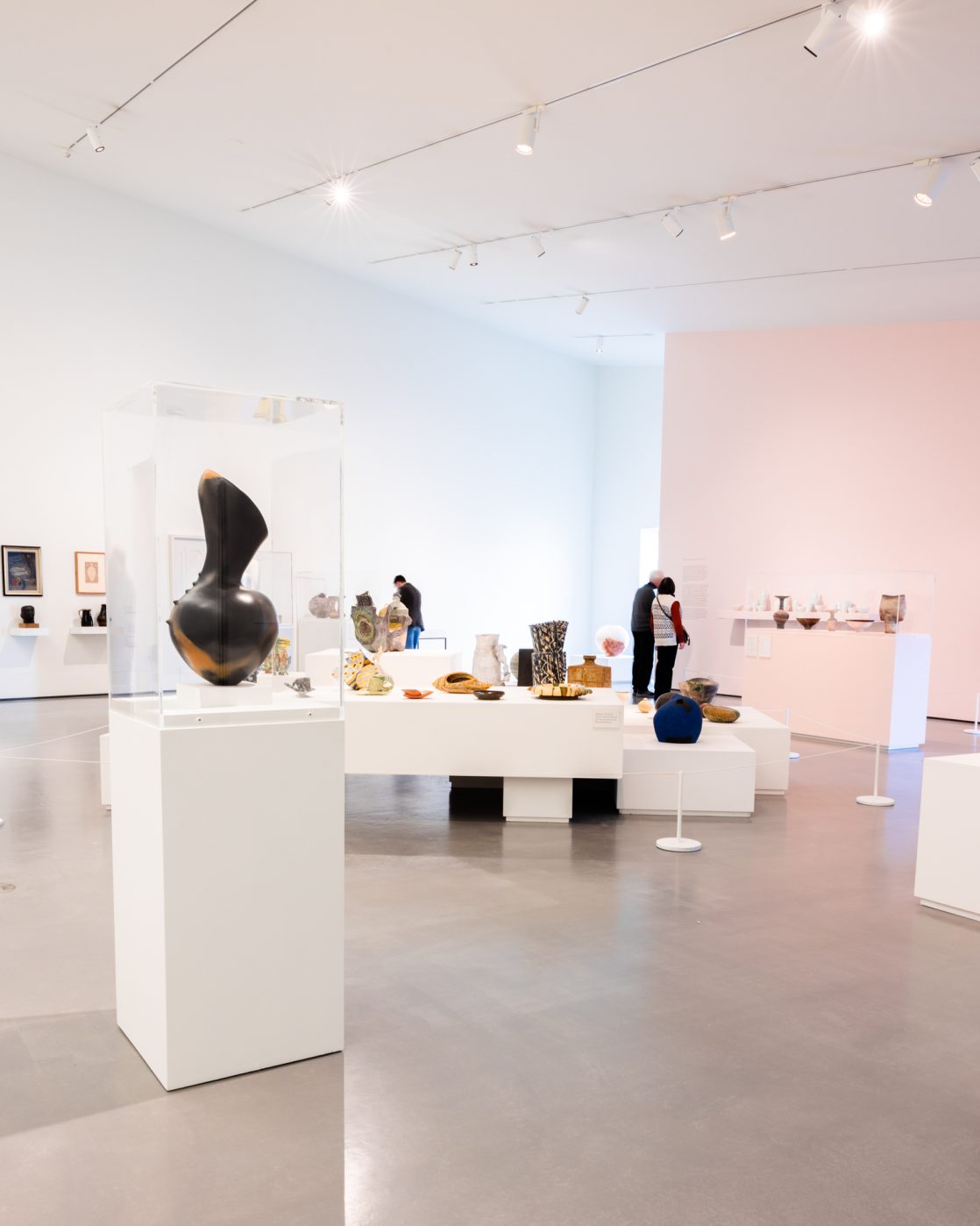
When it was established in 1923, Wakefield Art Gallery’s collection was aimed at nurturing the public’s understanding of contemporary art expressly ‘in its relation to modern life.’ The gallery was quick off the mark in acquiring British studio ceramics from the late 1930s and it now holds important works by some of the best-known names in British studio pottery in its collection.
The Art of the Potter: Ceramics and Sculpture from 1930 to Now, a year-long centennial exhibition at The Hepworth Wakefield, examines the synergies between British 20th-century studio ceramics and sculpture, whose histories are typically considered separately. Its starting point was two pivotal historic exhibitions that fostered dialogues between ceramicists and sculptors.
The first of these was a Seven and Five Society exhibition at Zwemmer Gallery, London, in 1935 that included Barbara Hepworth’s abstract sculptures, abstract paintings by Ben Nicholson and pottery by William Staite Murray. Nicholson had exhibited together with Staite Murray in 1927 and in 1928 he nominated him as member of the society.
Staite Murray had also exhibited works with paintings by Winifred Nicholson and Henry Moore’s sculptures. ‘If Mr Murray’s pots aspire to the condition of sculpture, the new works by young British artists… aspire to the condition of pottery,’ wrote a reviewer, Charles Marriott. ‘Not… by way of utility, but by putting the emphasis upon the abstract appeal of form and colour.’
Nicholson’s early still-life paintings depicted pots from his collection, however they gradually became devoid of representation and in 1934, he showed his first fully abstract ‘white relief’ at a Seven and Five Society exhibition, alongside Hepworth’s and Moore’s abstract forms. His oil on carved board relief 1935 [white relief Quai d’Auteuil] is included in the current exhibition.
The second historic exhibition was Art of the Potter, held at The Wakefield Art Gallery in 1959. Curated by visionary director Helen Kapp, it included modernist abstract vessels by Lucie Rie, Hans Coper and James Tower, alongside Yorkshire potters Barbara Cass, Irwin Hoyland, and Yvette and Paul Brown. An archival display includes a dog-eared typewritten list of works. Among the many loaned by inveterate local collector W.A. Ismay were 10 Coper pots and two by Rie. A further 15 of Rie’s were for sale, priced from seven pounds, 10 shillings to 23 pounds, 12 shillings and sixpence.
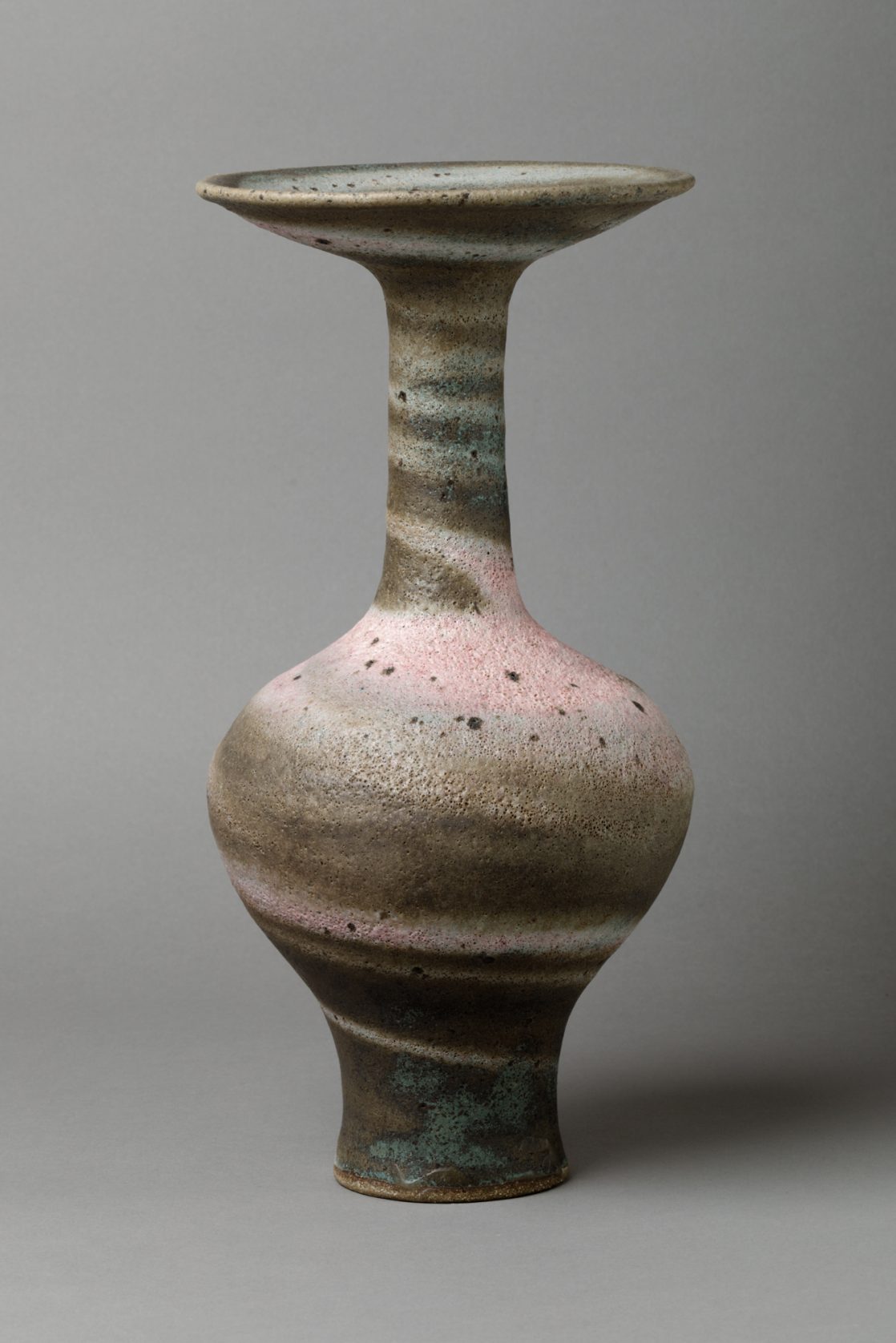
Lucie Rie, Vase with Flared Rim, undated, stoneware, 35 x 16 x 16 cm
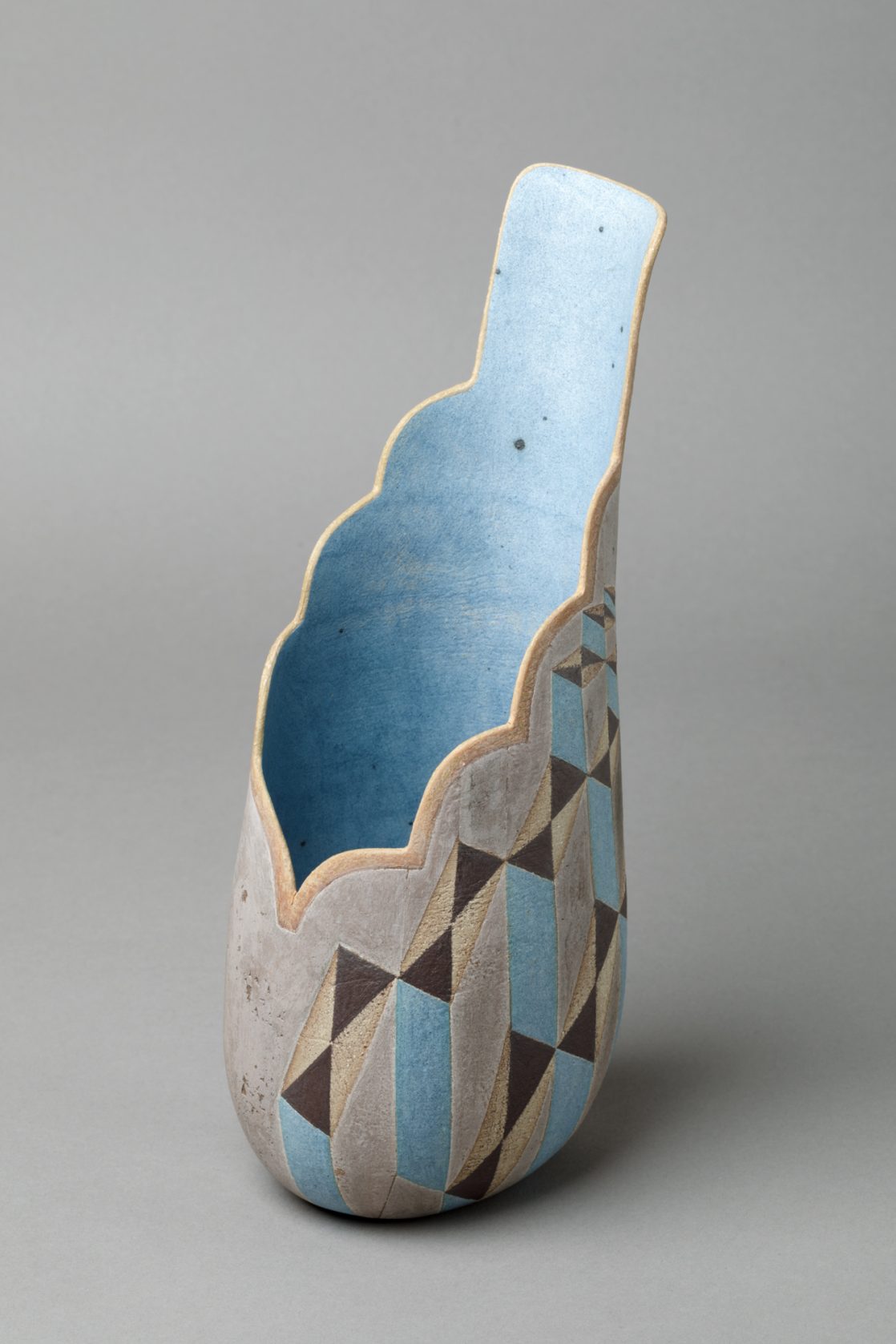
Elizabeth Fritsch, Spout Pot, undated, stoneware, 26 x 10.5 cm
DIVERSE DISPLAY
Some of Wakefield’s earliest ceramic acquisitions included a sgraffito-decorated earthenware Vase, 1938, by Michael Cardew, who studied with Bernard Leach in the early 1920s; and an earthenware vase Blood Rite, 1938, by Samuel Haile, donated by artist and collector Hazel King-Farlow, a sister of Peggy Guggenheim. At the Royal College of Art, Haile was taught by Staite Murray, whose tonal glazed stoneware Ovoid Vase, 1923, was presented to Hepworth Wakefield by the Art Fund as recently as 2022. Both potters were known for their vessels’ painterly brushwork and later Haile also became a surrealist painter.
Of the 80 works exhibited in The Art of the Potter: Ceramics and Sculpture from 1930 to Now, half are promised gifts. Displayed in one of the museum’s serene galleries, designed by architect David Chipperfield, most works can be scrutinised without peering through glass as they are displayed on freestanding plinths or open shelves.
As a result of the good natural light, Gwyn Hanssen Pigott’s nuanced glazing of her poised Shigaraki White Trail, 2012, and the effects of the changing light on its 23 porcelain vessels can be appreciated fully. A quartet of pots by Lucie Rie, including Vase with Flared Rim, and Hans Coper’s Spade Vase, are however, protected within a glazed rectangular vitrine. An adjacent open shelf displays works by potters, either taught or influenced by the émigré potters.
Also displayed on open plinths are a trio of stoneware vessels by Ewen Henderson, with his painting Stone Dawn, 1996, displayed on the wall behind; a duo of pots by Jennifer Lee, with her drawings of two unrelated pots, documenting post-firing analyses of her vessels, hung on the wall behind; and two cut-sided Lily Jars by Richard Batterham, one with salt-glaze and the other with ash.
RESONATING VISIONS
An enormous irregularly shaped, multiple level central plinth displays 23 works by 15 potters, including some particularly large vessels. In the 1950s and 60s many potters opted to handbuild by pinching, coiling or slabbing clay rather than throwing it on the wheel. New glazing techniques with rich colours were also in vogue. Alison Britton, Joanna Constantinidis, Bruce McLean, Carol McNicoll, Colin Pearson, Jacqueline Poncelet and Angus Suttie are among the potters represented.
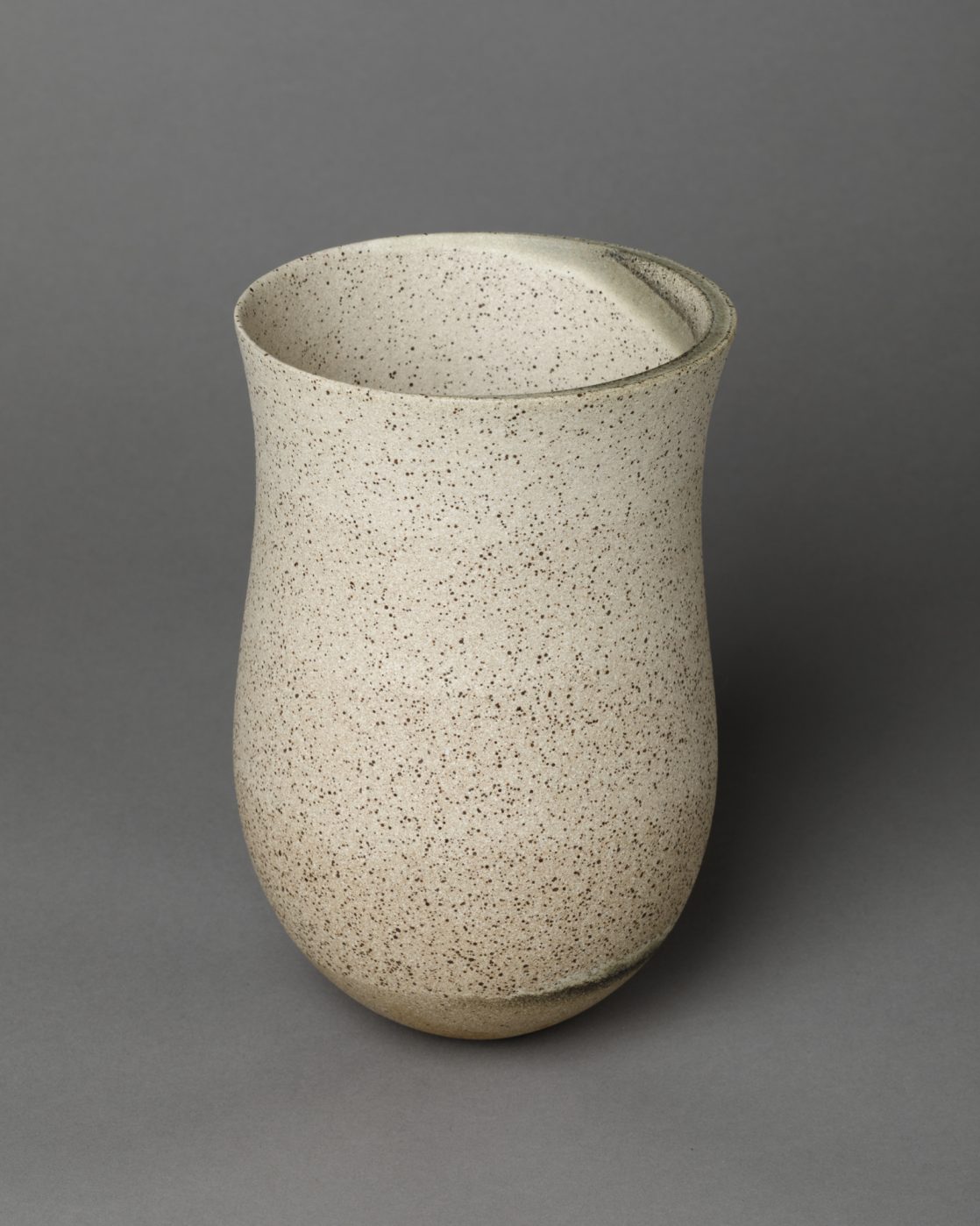
Jennifer Lee, Sand Grained Fleck Pot, laminated shelf rim, 2005, hand-built, unglazed coloured stoneware
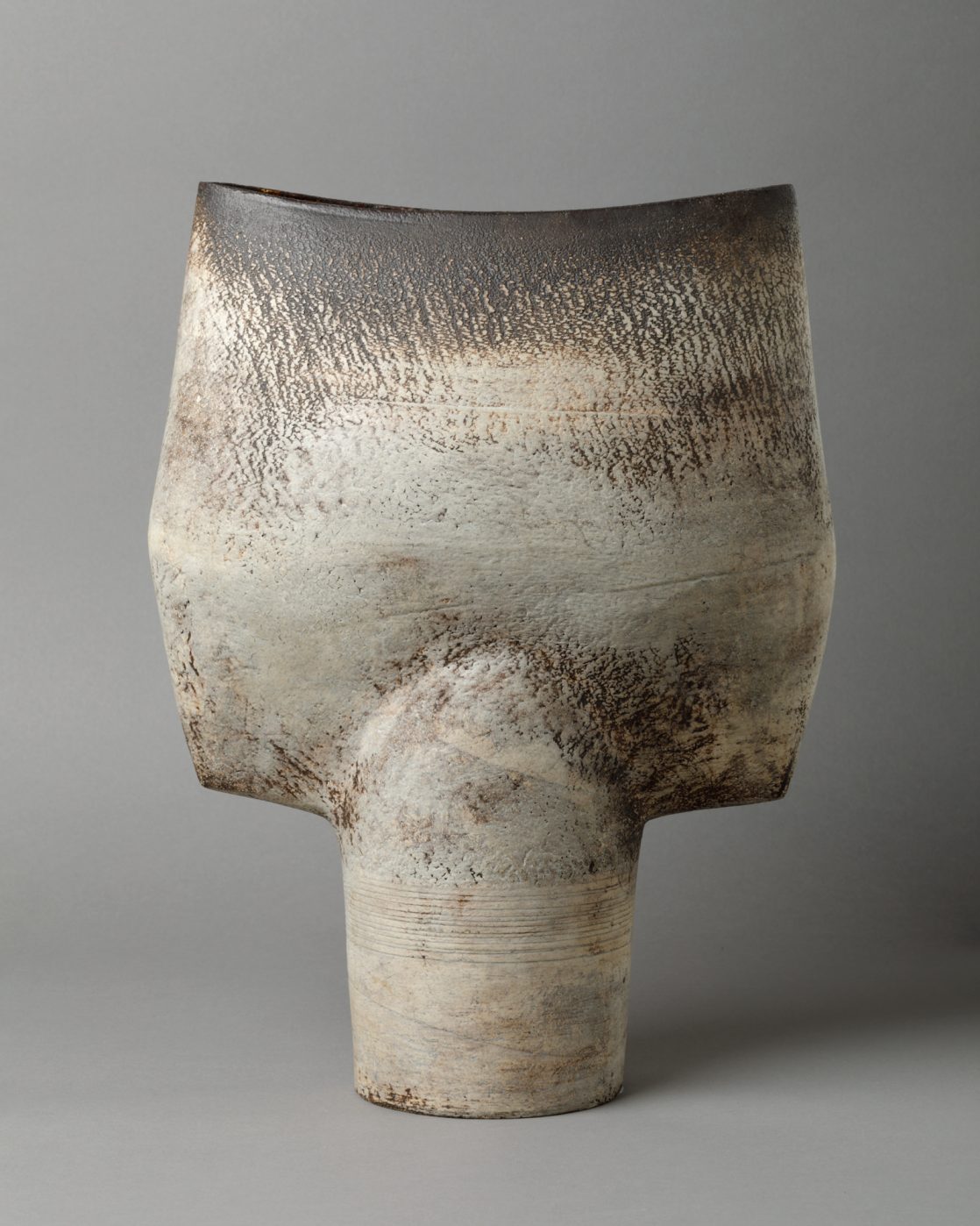
Hans Coper, Spade Vase, undated, stoneware
‘Pottery is by nature the most abstract of the plastic arts, it does not explain it only indicates, its usefulness is its emptiness,’ wrote Staite Murray in 1935 ‘… in the mind of the potter the positive and negative of pottery form are one.’ Little wonder then that his pots and those of other early 20th-century studio potters resonate so strongly with Hepworth’s and Moore’s monolithic carved and cast sculptures, whose enclosed unfilled spaces are as important to their vision as stone, steel or wood. From this interdisciplinary viewpoint, studio potters’ vessels transcend any quotidian utility and rank alongside sculpture aesthetically, emotionally and culturally.
At Hepworth Wakefield it is possible to move seamlessly between this temporary exhibition and its adjacent permanent galleries that display sculptures by Moore and Hepworth and documents their working practices. A visit to Wakefield is highly recommended.
The Art of the Potter: Ceramics and Sculpture from 1930 to Now, The Hepworth Wakefield, until January 2024; hepworthwakefield.org
Images: courtesy of The Hepworth Wakefield